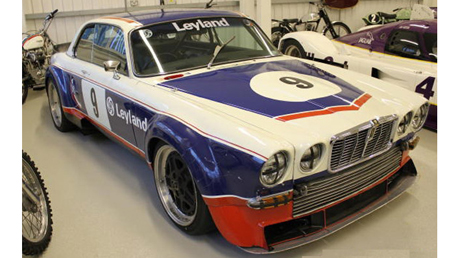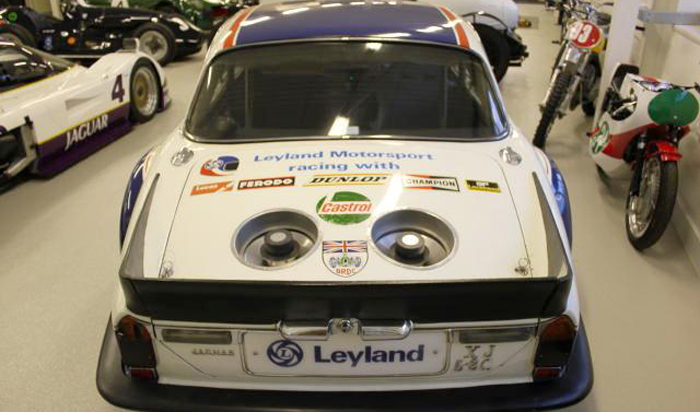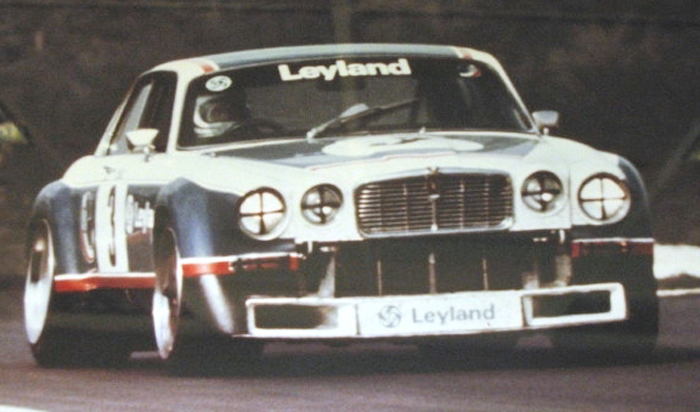
Classified of the week: Broadspeed Jaguar XJ12
If you’ve not noticed, Jaguar’s just released a little sports car called the F-Type. And the internet’s gone ballistic. It’s trending on Twitter. Jag’s press site’s crashed. And phrases like “fruity exhaust note” and “hard-edged” have been worn to a nub. So, just for a second, we shan’t bang on about it any further. But we will talk about another Jaguar that’s just gone on sale; one that shares little with the E-Type successor. It has more cylinders, more exhaust pipes, and considerably more chance of killing you. This, dear internet, is a Broadspeed XJ12, built for the European Touring Car Championship by Broadspeed.
It came at a tricky time for Jaguar: sales were down, and internal politics were tearing Jag’s parent company, British Leyland, apart. A full racing program was settled on to shift some cars and enthuse the suits. The XJ12 was, admittedly, an odd choice considering the car’s weight, complexity and general wobbliness. Nevertheless, BL gave Broadspeed owner, Ralph Broad, a brace of cars and told to turn them into Group 2-spec racers.
And this was what he came up with. The engine was a Jag 5.3-litre V12 (dry sumped from 1977) with racing pistons and independent injection, but other than that – and an oil cooler - it was relatively unchanged. Still, what few modifications were made boosted power to a whopping 600bhp. Power ran to the rear wheels through a standard manual gearbox casing with close-ratio gears, a chunky racing clutch, and a solid mounted, oil-cooled rear axle.
Despite the massive output, and desperate attempts to lighten the XJ shell, it was still a 1.5 ton car. And that caused several dynamic problems. Chiefly, slowing the thing down. Broad called on brake manufacturer, Lockheed, and explained his woes. Their solution was to go large, so the company produced some bespoke eight-piston callipers for the front and four pots for the rears.
Trouble was, this was still a project completed at the height of BL’s woes and general incompetence. And, unsurprisingly, the cars were besieged with problems. And, despite being driven by the legendary likes of Bell, Hobbs and Schenken, the XJ12s never won a race, so BL pulled the plug and mothballed the cars.
Thing is, when they worked, the Broadspeeds were actually very good – they often got to pole position (they just weren’t so good at staying there), and broke several lap records during their career. And this is Chassis Number 4 - the last of the factory backed racers and the most successful. It was acquired by the vendor from the very bloke that bought it from Jaguar’s official heritage collection, and it’s most original example in existence. It’s actually pretty much exactly as it was when it finished its last race in 1977.
The price? Its seller won’t say, which probably means it’s expensive… Click here to see the ad.
Then tell us this – new F-Type or this Broadspeed XJ?
Top Gear
Newsletter
Thank you for subscribing to our newsletter. Look out for your regular round-up of news, reviews and offers in your inbox.
Get all the latest news, reviews and exclusives, direct to your inbox.
Words: Matthew Jones
Trending this week
- Car Review
BMW 1 Series
- Top Gear's Top 9
Nine dreadful bits of 'homeware' made by carmakers










